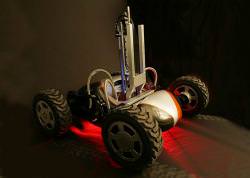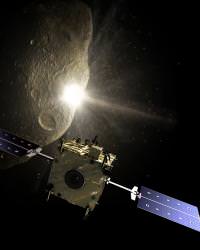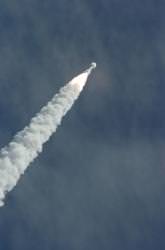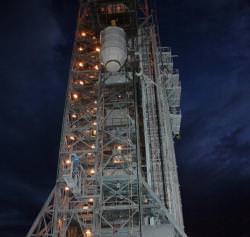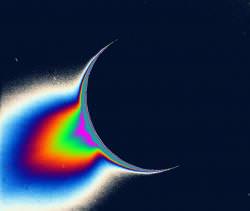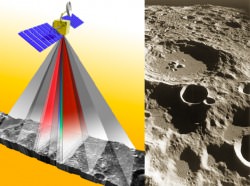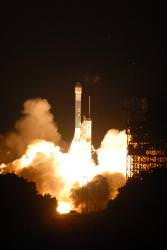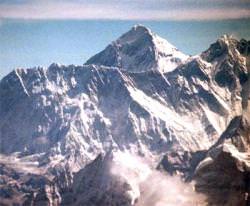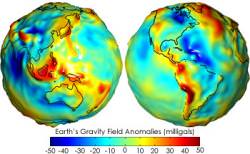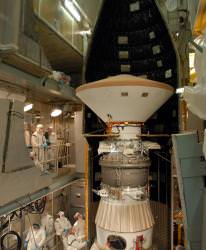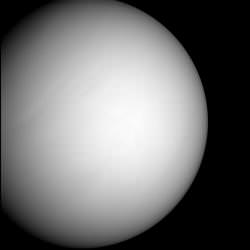Consider this: there are two rovers crawling around the surface of Mars. Isn’t it strange that we don’t have anything similar on the surface of the Moon. I mean, come on, it’s so close. Well, researchers at Carnegie Mellon are working to fix this problem. They’ve been tasked by NASA to develop a prototype lunar rover. One which can travel in the low lunar gravity, and hang on tight when it needs to drill down beneath the lunar soil.
The prototype lunar rover is called “Scarab”, and it’s being built by the Robotics Institute of Carnegie Mellon University’s School of Computer Science. Even though it’s being built to test out technologies designed for the surface of the Moon, this little rover will never make the trip. But its advances will be incorporated into future technologies for real missions.
Traveling around the Moon is going to be hard. Especially when you’re searching for water inside the perpetually darkened craters at the lunar southern pole. You’ve got regions of perpetual darkness at the lunar poles, where temperatures plunge to hundreds of degrees below zero. Instead of the traditional solar panels, Scarab will use a radioisotope source to generate energy.
It won’t get much power, though, probably less than the amount required to operate a 100-watt light bulb. This means that the rover will be operating in nearly complete darkness, relying on low-power, laser-based sensors. And it won’t be fast, crawling forward at only 10 cm/second (4 inch/s).
To be efficient, the rover must be light, but at the same time, it’ll need to have enough mass to let it operate as a drilling platform on the lunar surface. Engineers have calculated tat it needs to weigh at least 250 kg (550 pounds).
The researchers at Carnegie Mellon have been working on the rover since March, developing the structure and programming its software. They’re planning to do a field experiment near the end of the year, where the rover will drive and drill in total darkness.
They’ve also announced plans to enter the new Google Lunar X-Prize, offering $20 million to the first team to land a privately funded robotic rover on the Moon by 2012.
You can learn more about the rover, and see some videos of it in action at the Lunar Rover Initiative website.
Original Source: Carnegie Mellon News Release

